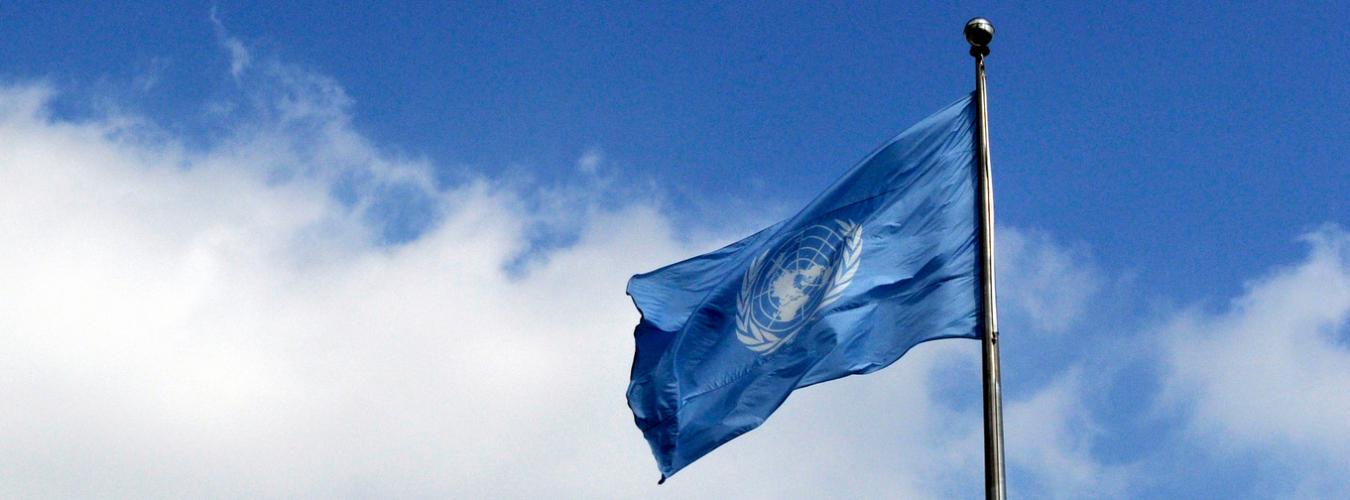
The flag of the United Nations, and the emblem of the United Nations (which is part of the UN flag design) have become symbols of the Organization as it carries out its work. With a pair of olive tree branches and a map of the world, the emblem and the flag on which it rests are also aspirational symbols for people all over the world, for they speak to their hopes and dreams of peace and unity. The emblem and flag of the United Nations have the practical effect of identifying the Organization in areas of trouble and conflict, to any and all parties concerned.
Designing the Emblem of the United Nations
The original emblem of the United Nations was created by a team of designers during the United Nations Conference on International Organization in 1945. The design team was led by Oliver Lincoln Lundquist. The UN emblem was designed to be "a map of the world representing an azimuthal equidistant projection centred on the North Pole, inscribed in a wreath consisting of crossed conventionalized branches of the olive tree, in gold on a field of smoke-blue with all water areas in white. The projection of the map extends to 60 degrees south latitude, and includes five concentric circles". (A/107)
The “UN blue” colour was also chosen at this time and became an integral part of the visual identity of the Organization. Blue represents peace in opposition to red, for war.
Approval of the United Nations Flag
The United Nations flag was approved by General Assembly resolution 167 (II) on 20 October 1947. The resolution states “the flag of the United Nations shall be the official emblem adopted by the General Assembly under the terms of its resolution 92 (I) of 7 December 1946, centered on a light blue ground.”
Use of the United Nations Emblem and Flag
The United Nations emblem has been incorporated into the logo designs of several entities in the UN System and is also used on United Nations stamps.
